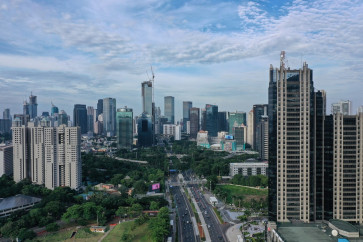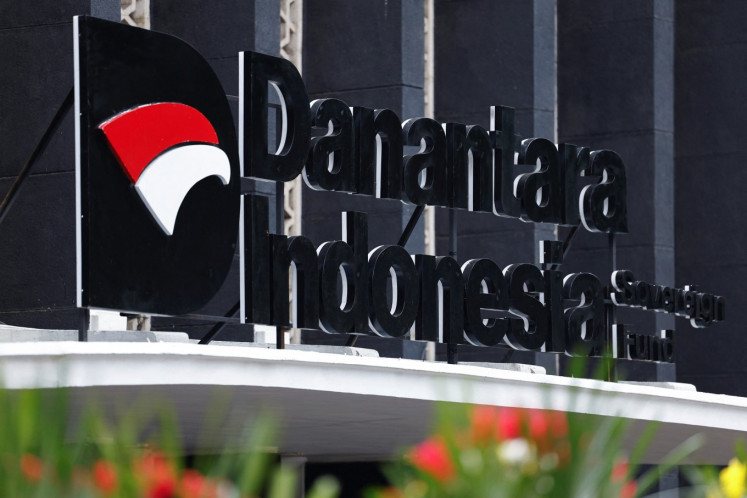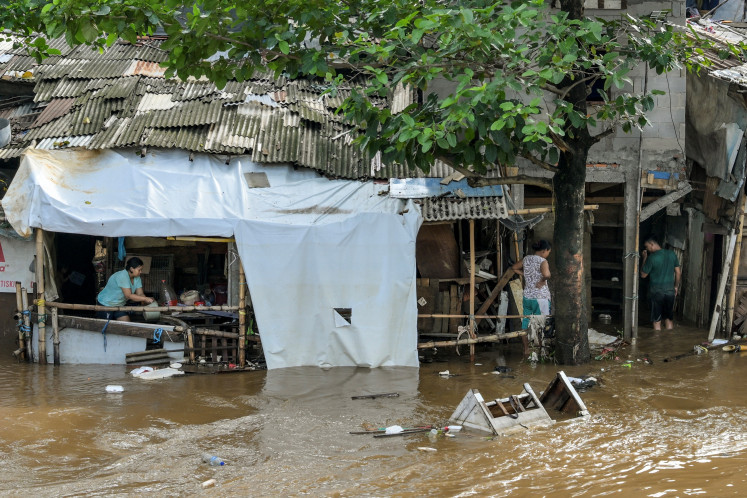Popular Reads
Top Results
Can't find what you're looking for?
View all search resultsPopular Reads
Top Results
Can't find what you're looking for?
View all search resultsIndonesia to have green building rating tool
Indonesia will soon have a green building rating tool, a voluntary environmental rating system that evaluates the environmental design and construction of buildings, amid growing concern about urban environmental degradation
Change text size
Gift Premium Articles
to Anyone
I
ndonesia will soon have a green building rating tool, a voluntary environmental rating system that evaluates the environmental design and construction of buildings, amid growing concern about urban environmental degradation.
The rating tool, which is called Greenship, is in the pipeline as a follow up to the establishment of the Green Building Council of Indonesia (GBCI) last year.
Like green rating tools in other countries, such as the US's Leadership in Energy and Environmental Design (LEED), the UK's Breeam, Australia's Green Star and Singapore's Green Mark, Greenship is being set as a voluntary effort to keep natural resources sustainable and to combat global warming.
The rating tool features several key elements - sustainable site, energy, water and waste management, material resources, indoor quality, innovation, transportation and social economy that are divided into credits. Points are awarded in each credit.
"The first draft of the Greenship rating tool has been completed. Our next step is to determine the points for each category, without which the rating tool is not yet functional," said Rana Yusuf Nasir, core founding member of GBCI and rating committee leader, on the sidelines of a three-day workshop on green buildings at the Jakarta Design Center.
The workshop was attended by professionals from the property industry, developers, building consultants, interior designers, architects and green product producers.
Rana went on to say that in determining credits and points, GBCI would not work alone but would involve various stakeholders, including representatives from various industries, the government, non-governmental organizations, property companies, interior designers, engineers, architects, professionals of various industries and industry associations.
By involving various stakeholders, it is expected that the Greenship rating tool will really reflect Indonesia's situation and the condition of property associated with environmental problems and maximum efforts to achieve the desired green building.
The Greenship rating is targeted to be launched by the end of 2009.
As soon as particulars of the Greenship rating tool have been agreed upon by stakeholders, the tool can be used as a reference for property developers or those engaged in building-related activities or businesses, said Tondy O. Lubis, GBCI's core founding member and vice chairperson.
Rana added that the next phase following the completion of establishing the Greenship rating tool would be preparing green building certification through which the green performance of a building could be evaluated.
"First priority (in terms of green building assessment) is given to new building construction and existing office buildings," he said.
Putting green building initiatives into practice requires strong will and commitment not only from the property industry but from all layers of society. "Green behavior, attitudes and a high sense of discipline is also required," he said.
Despite the growing popularity of green initiatives in Indonesia, many still translate green building initiatives into efforts to green their building by, for instance, setting up potted gardens in the building interior. If buildings owners or developers claim their buildings are categorized as green, then they implement green building projects based on their own definition, which is usually aimed at improving their brand image.
The global green building movement started with a study that reported that buildings and communities are responsible for over 40 percent of greenhouse gas emissions. Greenhouse gas is one of the contributors to climate change. Global awareness of the urgent need to reduce greenhouse gas emissions and other environmental degradation is driving the need for the rapid formation of Green Building Councils around the world.
The World Green Building Council (WorldGBC) was formed in 2002 as a union of national councils whose mission is to accelerate the transformation of built-up environments toward sustainability.
"This is a critical response strategy for cities and countries worldwide to their national and international commitments to reduce carbon emissions and redress other environmental impacts," said WorldGBC on its website.
GBCI's core founding member and chairperson Naning S. Adiningsih Adiwoso said that WorldGBC was divided into several regions, with the Green Building Council of Australia overseeing the Asia Pacific region. "Australia has the responsibility of helping every country in the Asia Pacific region to set up its respective green building council with its infrastructure," she said.
Naning said that Indonesia's Greenship adopted Australia's Green Star but with some adjustments to make it more applicable to Indonesia and to get the desired results.
According to Naning, international demand for green building offices is high. "This means that the green building is an important issue," she said.
Meanwhile, WorldGBC Asia Pacific regional manager Trudy-Ann King hailed the establishment of the Green Building Council of Indonesia and the rating tool as a significant move for Indonesia given the predicted impact of climate change on Asian people, including Indonesians.
Energy used in buildings emits carbon dioxide (CO2), resulting in the warming of the atmosphere and in turn creating a rise in sea level. Aside from flooding, the small rise in the sea level as a result of climate change has also polluted groundwater, making it salty.
"So, environmental issues are critical for Indonesia," she said, adding that green building practices could contribute to minimizing global warming.
A green building is also associated to health and wellbeing. "A study has found that green school buildings, such as one that lets in natural light, can prevent students from being prone to respiratory problems and headaches and can lead them to perform well in exams," she said.
Despite green being easy to pronounce, green still seems to be hard to implement and each country has its own difficulties and problems.
Robin Mellon, Green Star's executive director, said that with Jakarta being an urban sprawl, barriers to developing green buildings were different from the rest of Indonesia.
Similarly, in Australia, there are different cities, with different population growth, proximity to material resources, temperature and humidity. "Jakarta is like Darwin. You cannot rely on natural ventilation. It's too hot and too humid, but Perth in Western Australia has extreme temperatures and it's difficult to bring natural resources or materials to Perth to use for building," he said.
"So the rating tool that is used in Indonesia needs to be relevant to Jakarta or to each city to make sure that it can handle the population sprawl and transport problems," he said.
The green building initiative is voluntary in nature but in the next 10 or 20 years when the urban environment in Jakarta or in other big cities is predicted to be severely degraded, it may become a must and most probably a building code.
Benefits of green buildings
In 1900, only 10 percent of the world's population lived in cities, but in 2009, it increased to 50 percent and is predicted to rise to 75 percent by 2050. The green building initiative was designed to anticipate global urban sprawl. Following is some benefits of the green building prepared by Robin Mellon, Executive Director of Australia's Green Star:










